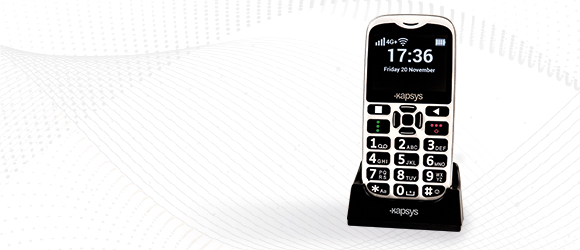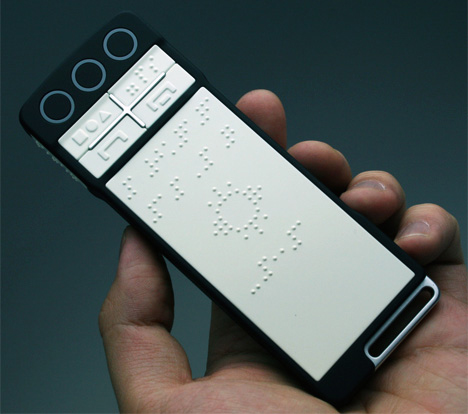Enhance Accessibility with Braille Displays and Notetakers
Enhance Accessibility with Braille Displays and Notetakers
Blog Article
Discover Cutting-edge Devices Made for the Visually Impaired
The advancement of innovative tools for the visually damaged stands for a considerable advancement in access and self-reliance. Technologies such as clever glasses with AI abilities and mobile applications made to supply auditory descriptions are reshaping daily experiences for customers. In addition, wearable tools that utilize haptic feedback boost environmental understanding, while modern Braille innovations use brand-new ways to engage with message. As these tools remain to develop, their influence on the lives of those with visual impairments elevates vital concerns about the future of inclusivity and freedom in numerous aspects of life. What exists ahead in this technical landscape?
Smart Glasses for Navigating

Smart glasses developed for navigating are changing the method aesthetically impaired people engage with their environment. These advanced tools make use of a combination of electronic camera innovation, expert system, and auditory feedback to give real-time information concerning surroundings. By using obstacle detection systems, wise glasses can notify customers to possible hazards, enabling much safer movement in both familiar and strange settings.
The integration of GPS modern technology even more improves navigating capabilities, enabling customers to receive auditory directions as they move. This hands-free strategy not just cultivates self-reliance however also empowers aesthetically impaired individuals to browse urban landscapes with increased confidence. Additionally, numerous wise glasses are outfitted with features that determine landmarks and road signs, supplying contextual info that boosts the customer experience.
Furthermore, the growth of these devices is consistently progressing, with companies working to enhance the accuracy of item acknowledgment and increase the variety of navigational attributes. As clever glasses become much more budget friendly and available, they hold the potential to dramatically change every day life for visually impaired individuals. Ultimately, these ingenious devices represent a vital action toward inclusivity, offering enhanced mobility and a better sense of autonomy for individuals navigating the world around them.

Mobile Apps for Daily Living
Exactly how can mobile applications boost the every day lives of visually damaged people? Mobile apps are revolutionizing the method aesthetically damaged users navigate their atmospheres, take care of daily tasks, and gain access to details. These applications provide vital support through various functionalities, promoting independence and boosting top quality of life.
Numerous innovative mobile apps are developed particularly for day-to-day living. Apps like Be My Eyes link visually impaired users with sighted volunteers using video calls, permitting them to obtain real-time help with tasks such as checking out labels or navigating unfamiliar rooms. In A Similar Way, Seeing AI, established by Microsoft, utilizes synthetic intelligence to describe surroundings, read text, and identify objects, efficiently changing a smartphone right into an effective device for daily help.
In addition, navigation apps customized for the aesthetically impaired, such as Aira and BlindSquare, provide audio-based instructions and environmental details, enabling customers to traverse their environments safely and with confidence. Past navigating and immediate aid, mobile applications additionally support company and job monitoring, with functions that aid customers establish tips, create order of business, and track consultations. In summary, mobile applications act as important sources, empowering visually impaired individuals to lead even more independent and meeting lives.
Wearable Technologies for Assistance
Empowerment via innovation is progressively noticeable in the realm of wearable devices developed to help aesthetically damaged individuals. These innovative devices integrate perfectly into every day life, improving navigating and supplying vital feedback to individuals. For circumstances, clever glasses geared up with video cameras can read and recognize faces message out loud, enabling individuals to connect more confidently in professional and social setups.
An additional remarkable innovation is the usage of haptic responses systems in wearable tools. These systems use resonances or various other tactile signals to communicate details concerning the customer's setting, such as obstacles or changes in surface, improving wheelchair and security. Wearable modern technologies additionally consist of wristbands that connect to smartphones, alerting users to alerts with subtle resonances, hence enhancing connection without dependence on aesthetic signs.
As these technologies continue to develop, they are not only enhancing independence for visually damaged people however likewise promoting a better feeling of inclusion in culture. By bridging the gap between difficulties dealt with in daily living and the potential for autonomy, wearable innovations act as pivotal devices in the mission for equal rights and empowerment for those with visual impairments.
Sound Description Tools
Audio summary tools play a crucial role in improving access for aesthetically damaged people, giving them with the ability to engage with aesthetic media. Braille displays and notetakers. These tools use narrated descriptions of key visual elements in movies, television programs, and live efficiencies, guaranteeing that users can completely understand the context and feelings shared through visuals
Sound description can be incorporated right helpful resources into numerous systems, including streaming solutions, movie theater testings, and live theater. Several prominent streaming solutions now consist of audio description as an ease of access function, allowing audiences to choose it easily. In addition to mainstream media, specialized applications also exist, offering audio summaries for art exhibits, galleries, and various other cultural occasions.
The efficiency of audio summary hinges on the ability of the storytellers, that have to communicate visual details succinctly without diminishing the initial sound. Innovations in this area are additionally leading the way for more individualized experiences, where users can change the degree of detail and pacing according to their choices.
Braille Innovations and Instruments
Braille gadgets and developments have actually dramatically transformed the means visually damaged individuals interact with message and details. Modern advancements have actually led to the development of versatile devices that enhance literacy and freedom among users.
Furthermore, mobile Braille notetakers combine standard Braille input with modern performances, promoting note-taking, scheduling, and file editing and enhancing on the go. Mobility aids for visually impaired users. These check my site compact devices usually include text-to-speech capacities, linking the gap between Braille and acoustic details
Additionally, innovative Braille printers have actually arised, enabling customers to generate Braille labels, records, and instructional materials efficiently. This access promotes better participation in educational and expert environments, ultimately advertising inclusivity.
Furthermore, study right into smart Braille innovations remains to expand. Gadgets that integrate synthetic knowledge are being checked out to provide real-time navigating support and contextual info, improving the individual experience in varied setups. On the whole, these innovations show a commitment to encouraging aesthetically damaged individuals with technology, ensuring they can easily accessibility and involve with the world around them.

Conclusion
The advancement of cutting-edge devices for the aesthetically impaired significantly enhances self-reliance and high quality of life. Smart glasses, mobile applications, wearable modern technologies, audio description devices, and Braille developments collectively encourage individuals by offering important navigating support, environmental awareness, and improved analysis experiences. These modern technologies not only foster greater inclusion however additionally promote autonomy in daily activities, ultimately contributing to a more accessible and fair culture for visually damaged people. Proceeded growth in this field holds assurance for more enhancements.
As smart glasses end up being a lot more available and budget-friendly, they hold the prospective to considerably change everyday life for aesthetically damaged users. Mobile applications are transforming the means aesthetically impaired users navigate their environments, manage everyday tasks, and gain access to details. Apps like Be My Eyes attach visually impaired users with sighted volunteers by means of video clip calls, enabling them to eye exam appointment get real-time aid with tasks such as reviewing labels or navigating strange spaces.In addition, navigating apps tailored for the visually impaired, such as Aira and BlindSquare, supply audio-based directions and environmental information, making it possible for customers to traverse their surroundings securely and with confidence.The improvement of cutting-edge tools for the visually impaired significantly enhances independence and high quality of life.
Report this page